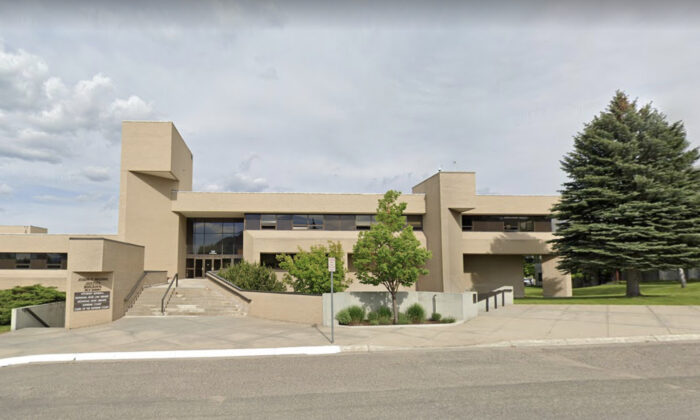
Victorian Premier Jacinta Allan and Planning Minister Sonya Kilkenny (Image: AAP/Joel Carrett) Why are new buildings uglier than old ones? This is an incredibly common question , asked most recently by New York Times columnist Ross Douthat. Caveats aside — there are some truly beautiful modern buildings out there, including ones that don’t revive past styles — even the least nostalgic urbanists should concede that too many modern buildings are drab or unsightly, and that such eyesores undermine public support for other new developments. It doesn’t follow, however, that we should give up on modern architecture entirely and freeze the existing built environment in place, as many NIMBYs (not in my backyard) believe.
Not only is this unrealistic — cities are necessarily growing, living ecosystems, not museums — but it would actually, counterintuitively, make matters worse. NIMBYism is, in fact, one of the causes of ugliness in our cities. It’s not the only one; some argue that higher labour and construction costs have led architects to cut back on “pretty” ornamentation (though on the plus side, workers get paid more and don’t die on worksites as often).

Conversely, others argue that losing the frilly bits was an aesthetic choice . Toplace and other dodgy developers are a key driver of NIMBYism Read More But on top of these economic and cultural forces, urban blights are often caused by architects and developers expediently responding to the planning system — a system built to appease NIMBYs. The story often goes like this.
An architect will design a reasonably nice apartment block and the developer will file the requisite planning applications. Local NIMBYs will then try to get the whole thing scrapped or, failing that, reduce the height or “visual bulk” of the building. The architect’s cohesive design will have chunks hacked out of it.
Because fewer units can now fit, lowering profitability, the developer will try to cheapen the materials. The result is usually a smaller, worse-looking building than what was originally proposed. This happens so frequently and predictably that one must suspect many NIMBYs aren’t in fact motivated by aesthetic concerns at all.
Their revealed preference is simply to share their mediocre-looking streets with fewer diverse neighbours, protecting their “neighbourhood character” not in architectural terms but demographic ones. Not to mention inflating their own property values. Why modern buildings look like wedding cakes Let’s consider a common, odious imposition: upper-level setbacks.
Planning rules and council interventions often require that a building’s higher levels have smaller floor-space than lower levels, creating a graded incline like a wedding cake. This flies in the face of both architectural tradition and modern consensus. The European and Asian cities that Australians most frequently holiday to, and marvel at the architectural beauty of, are blessed with clean sweeping lines instead of jutting-out, jenga-like blocks.
Does anyone seriously think that this...
These things are a cancer. https://t.co/Az8KSKLRKE pic.
twitter.com/r1js46opaO — Sydney YIMBY (@SydneyYIMBY) September 2, 2024 ..
. looks better than this? Even in R3 areas of Sydney and Melbourne this would be illegal. Where are the setbacks? Visual bulk! Etc.
.. https://t.
co/Yp2fNLP13x — Andy Leach (@TheLeachie) September 15, 2024 Most of Australia’s top architects don’t. Dozens of them have this month signed an open letter to Victorian Planning Minister Sonya Kilkenny recommending that she scrap such requirements for the state’s slated “activity centres”. Proponents of setbacks say they prevent “wind tunnels”.
Yet this concern is based on research focused on buildings over 20 storeys high, while setback requirements in Australian cities often kick in as low as the third floor. They also claim setbacks are necessary to increase access to sunlight. But in a warming world, is shade such a bad thing? This presumption is increasingly being revised .
What do three decades in the prime minister’s suburb tell us about housing? Read More Finally, they don’t like “visual bulk” — an entirely made-up term , which appears to have wormed its way into the planning lexicon through interactions with anti-development activists. Such development aversion has been elevated not only above common aesthetic taste, but also significant environmental and economic risks. As the open letter’s authors point out, setbacks decrease thermal efficiency and increase embodied carbon within buildings (more sun-exposed surfaces, more concrete), produce more defects , including timber-rot and mould, and reduce the number of housing units built, all at greater expense .
Case studies show removing setbacks can increase the number of units on developments by between 20-70%. Things are looking up Thankfully, their proponents might be set for a setback themselves. Earlier this month, The Age reported on a leaked copy of the Victorian government’s awaited planning reforms, showing it plans to remove the requirement for councils to impose setbacks on buildings up to 11 metres (three storeys), as well as the need to consider “neighbourhood character”.
The NSW government also signalled last week that it isn’t done with planning reform as it may struggle to hit its housing targets without it. These reforms could make housing more abundant, cheaper and better looking. It’s rare to get such win-win scenarios.
And they’d reduce construction costs at a time when they’re particularly high. To give the nostalgists their due, we did build some incredible buildings in the 19th and 20th centuries. Just look at the Art Deco walk-ups of New York, the gentle density of Paris, the neon-clad mixed-use streets of Tokyo’s Shinjuku.
Call me old-fashioned, but I love the five-storey Georgian and Queen Anne-style townhouses that surround my office in Westminster. We didn’t stop building these due to the spiritual emptiness of modernity, as Douthat suggests. It was far more attributable to the narrow-minded moat-building of suburban capitalists, and their handmaidens in local bureaucracy.
Perhaps I’m too cynical, and there are some genuine aesthetes among the otherwise self-interested and parochial NIMBYs who purport to care about the visual appeal of our cities. If so, I hope they join the campaign against setbacks. Let’s build something beautiful together.
Should planning and development rules be overhauled? If so, in what way? Let us know your thoughts by writing to [email protected] .
Please include your full name to be considered for publication. We reserve the right to edit for length and clarity..














